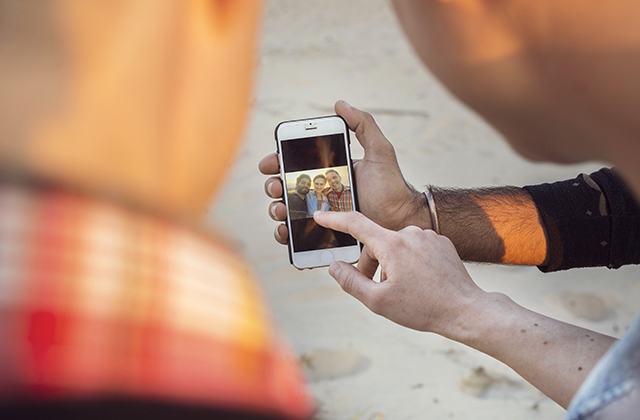
Hashtags are one of the most misunderstood tools in the social media toolkit. While they can be powerful drivers of reach, visibility, and engagement, they can also open the floodgates to bots, fake followers, and irrelevant interactions if used carelessly.
So, how do you use hashtags that actually work — ones that attract real people, spark authentic engagement, and support your brand growth, without inviting the fakes?
Here’s your complete guide to hashtag strategy in 2025, backed by insights from top creators, platform updates, and the best practices of every professional social media agency worth their salt.
Why Hashtags Still Matter
Let’s clear something up: hashtags aren’t dead. When used strategically, they still:
- Boost discoverability on Instagram, TikTok, LinkedIn, and Twitter/X
- Group your content into topical categories that help algorithms understand your post
- Connect you to communities and real conversations
- Attract niche audiences actively searching for your topic
But what’s changed is how they should be used. Gone are the days of dumping 30 random tags and expecting results. Today’s platforms favor relevance, context, and quality over quantity.
The Dark Side of Lazy Hashtagging
Using generic hashtags like #love, #followme, #instagood, or #likeforlike might get your post in front of more eyes — but often the wrong ones. These hashtags are magnets for:
- Fake accounts
- Spam comments
- Bots auto-liking your post
- Engagement that doesn’t convert into followers, clicks, or trust
Worse still, Instagram now downranks posts that appear to be using hashtags for engagement bait. That means you could actually hurt your visibility by using overused or irrelevant tags.
This is where working with a professional social media agency can be a game-changer — they know how to tailor hashtag strategies for authentic reach.
Step-by-Step: Creating a Hashtag Strategy That Works
To avoid the fakes and attract genuine engagement, you need a plan. Here’s a step-by-step framework:
1. Define Your Goals
What’s the purpose of your post?
- Are you looking for more brand exposure?
- Do you want to attract buyers in a niche market?
- Is your aim to join a trending conversation?
Your hashtag choices should support your intent. Broad exposure hashtags differ from community-building ones.
2. Mix Broad and Niche Hashtags
Think of hashtags as a pyramid:
- Top-level hashtags (e.g., #marketing, #fashion): Huge volume, broad reach, but highly competitive and prone to spam
- Mid-tier hashtags (e.g., #digitalfashiontips, #smallbizmarketing): Moderate competition, better targeting
- Niche hashtags (e.g., #sydneymumpreneurs, #dogcollarshop): Specific, lower volume, but high engagement and relevance
Use a mix of all three, but lean toward niche tags. These draw in real people who are actually interested in what you’re posting.
A professional social media agency will usually recommend using 5–8 high-quality hashtags instead of 30 irrelevant ones.
3. Research Before You Post
Don’t just guess — investigate:
- Use Instagram’s search bar to preview how often a hashtag is used and what kind of content shows up
- Monitor competitor hashtags to see what’s working in your niche
- Check for banned or flagged hashtags that could hurt your reach
Some tools to try:
- Display Purposes – suggests relevant hashtags by topic
- RiteTag – scores hashtags in real-time based on reach
- Flick – advanced hashtag performance analytics
4. Avoid the Hashtag Red Flags
To keep bots at bay, avoid:
❌ Generic engagement tags: #follow4follow, #likesforlikes, #commentback
❌ Overly broad tags: #happy, #summer, #beauty (without context)
❌ Spammy trends or hashtags hijacked by fake accounts
Even if you’re tempted to ride the wave of trending tags, make sure they align with your content and brand voice.
5. Create Your Own Branded Hashtag
If you’re running a campaign, launching a product, or building a community, create a branded hashtag that reflects your identity. This helps:
- Gather user-generated content
- Track participation and loyalty
- Build brand consistency
Examples:
✅ #ShotOniPhone
✅ #AdobeCreator
✅ #MadeWithCelebrate (great for custom artists or creatives)
You can promote this tag in your bio, captions, packaging, or event materials. A professional social media agency can help plan and roll out these hashtag campaigns for maximum impact.
Platform-Specific Hashtag Tips
Every platform has its quirks. Here’s how to tailor your strategy:
- Use 3–8 hashtags max
- Place them in the caption (not the first comment)
- Avoid repeating the same hashtags across every post
TikTok
- Use 3–5 relevant hashtags
- Combine trending tags (e.g., #fyp, #tiktoktips) with niche ones
- Keep it casual and fun — TikTok favors authenticity
- Use 3–5 hashtags in posts
- Stick to industry-specific and thought leadership tags (e.g., #leadershipdevelopment, #b2bcontent)
- Avoid hashtags that scream spam
Twitter/X
- Limit to 1–2 hashtags per tweet
- Use current events, trends, or branded tags
- Great for live events and real-time conversations
Monitor and Adjust
A smart hashtag strategy is not “set and forget.” Track your performance:
- Which hashtags drove the most reach or clicks?
- Are you getting real engagement (saves, shares, comments)?
- Are you attracting the right kind of followers?
Tools like Instagram Insights, Sprout Social, and Later make this easy — or partner with a professional social media agency to do the heavy lifting for you.
Final Thoughts: Quality Over Quantity
Hashtags are about connection, not chaos. When used with intent, they attract real people who are interested in what you offer. When abused, they attract bots, junk traffic, and meaningless numbers.
To truly stand out in 2025’s crowded social landscape, focus on relevance, authenticity, and community. Pair strong visuals and messaging with hashtags that speak directly to your target audience — and leave the fakes behind.
And if you’re unsure where to start, reach out to a professional social media agency that knows how to balance creative flair with data-driven strategy. Because the best hashtag strategy is the one that works — for your real audience.